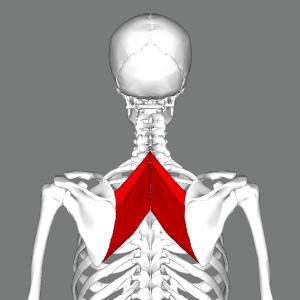A better teaching approach is needed for introducing the Scapula Muscles to fitness, sports performance, and physical rehabilitation students.
— JENNAN HOWE, BrookbushInstitute.com Member
NEW YORK, NY, UNITED STATES, May 15, 2024 /EINPresswire.com/ — The Brookbush Institute leads the charge with the development of a student-centered course that is far more than memorization. The course includes a video lecture, activities, tons of examples, and a bit of humor to make learning, understanding, and applying the terms a fun and rewarding experience! (Note: this course is also approved for credits toward continuing education and certification)
INTRODUCTION from “Lesson 7: Scapula Muscles” (from “Introduction to Functional Anatomy Courses” at BrookbushInstitute.com)
MUSCLES OF THE SCAPULA
The trapezius, rhomboids, levator scapula, pectoralis minor, and serratus anterior are the muscles that contribute to the scapula’s motion. These muscles are attached to the scapula and the spine or rib cage. Optimal scapula motion is essential for optimal shoulder and upper extremity motion.
WHY IS SCAPULA MOTION IMPORTANT
The scapula, or shoulder blade, serves as the foundation for the humerus, the bone of the upper arm. Proper movement of the scapula is crucial for aligning the glenoid fossa, the shoulder socket, with the head of the humerus. This alignment is essential for maintaining upper limb stability during all types of movements.
SCAPULA MUSCLES IN ACTION:
The muscles responsible for moving the scapula (shoulder blade) and shoulder girdle (including the scapulothoracic joint, acromioclavicular joint, and sternoclavicular joint) are the pectoralis minor, rhomboids, serratus anterior, trapezius, and levator scapulae. The strength of these muscles is crucial for scapular stability, as the scapula does not have a direct bony attachment to the rib cage. Additionally, these muscles facilitate scapular motion. For example, during the shoulder press exercise, the upper trapezius, lower trapezius, and serratus anterior work together to achieve upward rotation when the shoulder abducts. In a cable row, the middle trapezius and rhomboids are engaged in scapular retraction as the shoulder extends. The serratus anterior is the primary muscle for scapular protraction, playing a key role in stabilizing and moving the scapula during exercises like the bench press.
These muscles are crucial for maintaining optimal posture by preventing scapular dyskinesis (less than optimal scapular motion). They also help ensure the alignment and stability of the cervical and thoracic spine. As mentioned above, these muscles are also important for maintaining optimal shoulder alignment and preventing maladaptive changes in shoulder arthrokinematics.
IMPORTANCE OF THE SCAPULA MUSCLE FOR FUTURE COURSEWORK
Sports medicine professionals—including personal trainers, fitness instructors, physical therapists, massage therapists, chiropractors, occupational therapists, and athletic trainers—must thoroughly understand the muscles of the scapula. This knowledge is critical for analyzing human movement and designing advanced exercise programs and rehabilitation interventions. Mastery of scapular anatomy is foundational for future studies on shoulder anatomy, including muscles originating from the lateral border of the scapula and extending across the shoulder, as well as the muscles of the elbow, such as the triceps brachii and the back, like the latissimus dorsi.
Advanced coursework will delve into injury and pain management, addressing issues like muscle weakness, scapular dyskinesis, and shoulder pain. Students will also learn palpation techniques, such as using the inferior angle to assess beneath the scapula. Further, strategies for optimizing muscle activity can enhance scapular movement and upper limb strength, which is crucial for sports performance.
This Course Includes:
– Video Lecture
– Study Guide
– Text of Material
– Learning Activities
– Practice Exam
– Continuing Education and Certification Approved Final Exam
Brent D Brookbush
Brookbush Institute
+1 2012069665
email us here
Visit us on social media:
Facebook
Twitter
LinkedIn
Instagram
YouTube
TikTok
![]()
Originally published at https://www.einpresswire.com/article/711796611/the-brookbush-institute-announces-new-lessons-on-learning-the-scapula-muscles
The post The Brookbush Institute Announces New Lessons on learning “The Scapula Muscles” first appeared on Beauty Ring Magazine.
Beauty - Beauty Ring Magazine originally published at Beauty - Beauty Ring Magazine




